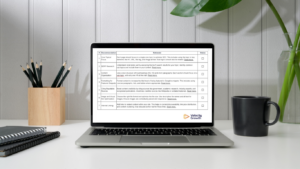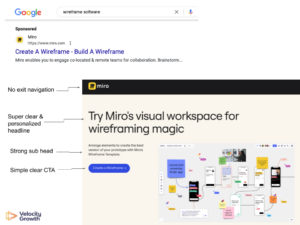A Step By Step Guide to Starting A Podcast
Starting a podcast can seem like an intimidating task, but it doesn’t have to be. Podcasting has become a great way to share information, talk about your ideas, and even make money. So if you have been thinking about getting into podcasting, and want to get some pointers, this article is for you. Written as a step-by-step guide, we map out the start, middle and final (publishing) stages.
Starting Out
If you want to start a podcast, the key is to stop thinking about it and to just get started! Remember, it doesn’t need to be perfect right off the bat, you will learn as you go along. Though it is important at this very early stage to put good thought and effort into planning the show you want to have, to make sure it can stand out from the crowd. It doesn’t have to be expensive either. All you need is a microphone and a computer with a recording program.
The microphone you choose will depend on your budget, but something like the Blue Snowball USB Microphone is more than enough for most people. It’s a great quality microphone for a reasonable price and will plug straight into your computer.
The next thing you need is a recording program. Again, this will depend on your budget. If you have a Mac and don’t want to spend any money, then we recommend GarageBand. It comes pre-installed on all Macs, and while it may not have all the features of some other recording programs, it’s easy to use and will do the job. If you want to spend some money on a more advanced program, then I recommend Adobe Audition, which works on both Mac and PC. The great thing about this program is that it does all the editing automatically for you, so if you’re not sure how to edit your podcast, this is the one to get.
The recording process is simple. All you need to do is record a test podcast and listen back to it. This will help you figure out what you need to do to improve your sound quality. Once you have done this, record a test episode of your show, and listen back again. You are looking for a good quality sound, but you don’t want it to be too tinny. Keep doing test recordings until you are happy with your sound.
Creating Your Podcasts Magic Formula (The Middle Bit)
Step 1 – Pick a Topic
When you are all prepared, the next thing you need to do is to decide what you want to discuss. Do you want to talk about a very specific topic? Or do you want a more general show, where you have the freedom to talk about a variety of topics? How much time will you be able to commit? If you’ve never done a podcast before, it’s best to start out with something simple. You can always expand your show as you go along.
Decide on the topics you want to discuss and make notes.
Step 2 – Create a Show Outline
From these notes, create an outline of what you want to cover in each episode. This will help you to stay on track when recording your podcast. You don’t want to find yourself talking about one thing for too long, and forgetting about the rest of your show. It’s always best to have a plan for your show so that it will be smooth sailing all the way through.
Step 3 – Create an Intro and Outro
The intro and outro are the parts of the show where you introduce and wrap up your topics. These are very important parts of the show, so you want to make sure you spend time on them. In the intro, give background information about your show and what you want to talk about in the episode. Then, you’ll need to come up with a catchy way to say “goodbye” at the end of the show. You can do this by giving a summary of the discussion, thanking your listeners, or by making a statement that leaves your listeners wanting more.
Step 4 – Create a Script
Since you’ve created an outline for your podcast, it’s time to turn that outline into a script. A script is exactly what it sounds like: you’re writing down exactly what you want to say in each part of the show. This will help keep you from going off track during the episode and will make sure that you say everything you want to say.
Step 5 – Record your Intro, Outro, Topic Introductions, and Topic Wrap-Up
You’ve got your intro, outro, topic introductions, and topic wrap-up all planned out. Now it’s time to record them!
The Final Stages
The final stage is to edit your podcast. You’ll want to take the parts you recorded in steps 4 and 5 and add them into a single file. When editing your podcast, there are three things you’ll want to pay special attention to sound quality, content, and flow. Sound quality is important because it’s the first thing your listeners will notice. If your sound quality is poor, people will listen for a little while but won’t return to your podcast. That’s why it’s so important to record on a good microphone in a quiet environment and to edit out any mistakes. When starting out remember to test and test again to get your sound right! You’ll also want to make sure that you’re saying everything you want to say, and that every sentence is clear and easy to understand.
You’ll want your podcast to flow well because it helps keep your audience engaged. If your podcast sounds disorganized, your audience will get confused and wander away.
When you’re finished editing, you’ll want to upload your podcast to a platform where people can listen to it. There are several different places you can do this. You can upload it to a site like SoundCloud, Stitcher SmartRadio, or iTunes. The easiest way to upload your podcast is by using a site like Libsyn or Soundcloud. Libsyn is a lot easier to use than Sound Cloud, but SoundCloud has more listeners and is more popular.
You’ll also want to promote your podcast. This will help you get more listeners, which means you can begin to make money with your podcast. There are a few ways to promote your podcast, including social media, email, and other platforms.
Once you’ve recorded your podcast, edited it and uploaded it to a platform, and promoted it, there are a few tips you can use to keep people listening. First, you’ll want to structure each episode so that it flows in a logical way that’s easy to follow. You’ll also want to make sure that each episode has a topic or theme so that people know what they’re listening to and have an idea of what to expect. Finally, you’ll want to keep the episode short and to the point. People are busy and they don’t have time to listen to a podcast that is too long or goes on and on about irrelevant topics.
Remember, the only way to get started is to start! We hope you found the article helpful, happy podcasting, and we look forward to hearing you on the airwaves!

Craig Zingerline is a 6 time founder who has helped dozens of companies scale their growth. Prior to Velocity Growth, Craig was the Chief Product Officer @ Sandboxx, Head of Growth at Upside Travel, CEO of Votion, Head of Growth at Red Tricycle, and VP at New Signature. In addition to in-house roles, Craig has advised and consulted with dozens of high growth startups (4 exits). He’s an award winning product strategist who has mentored hundreds of founders on growth, marketing, and product management.






